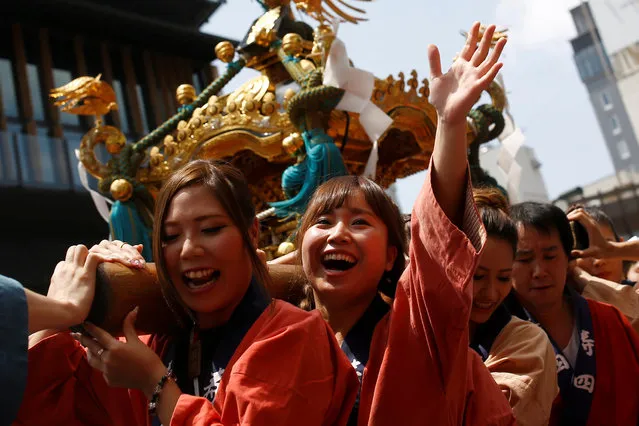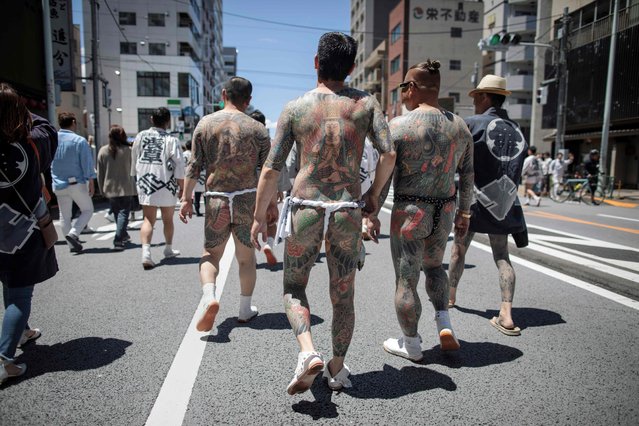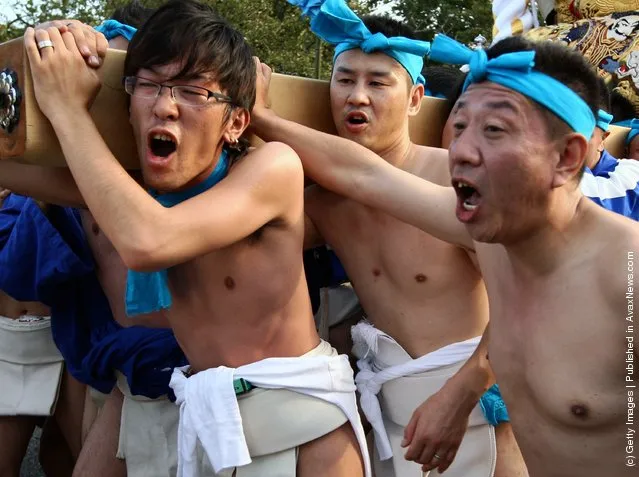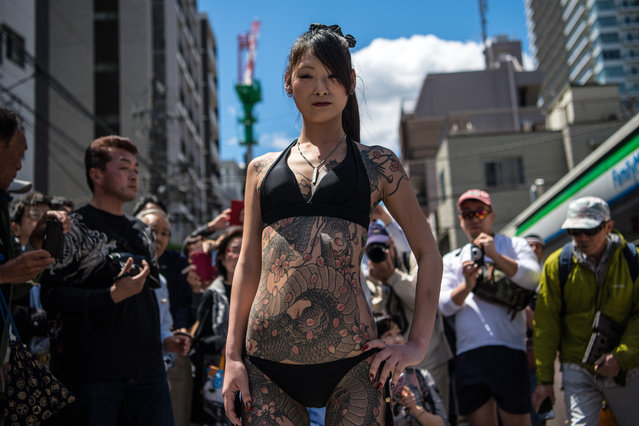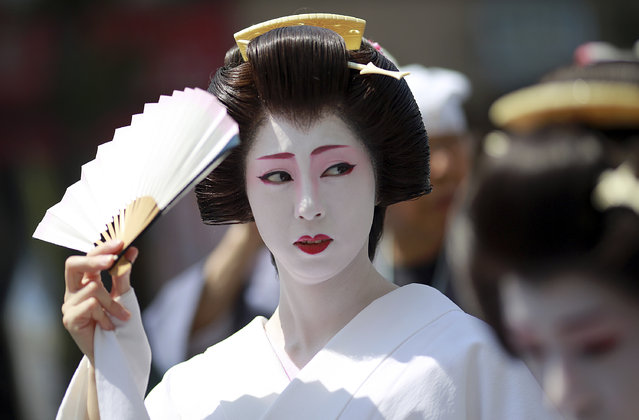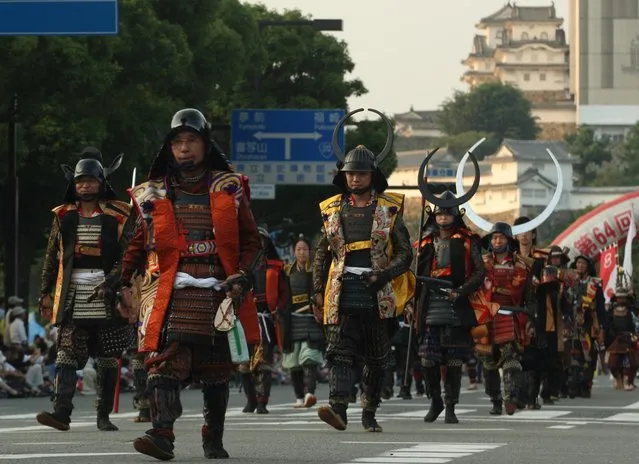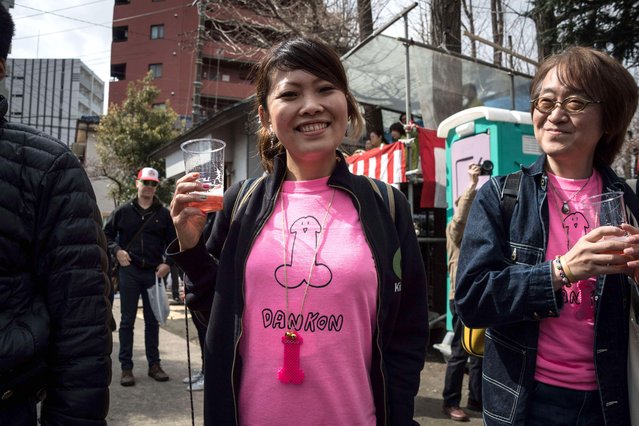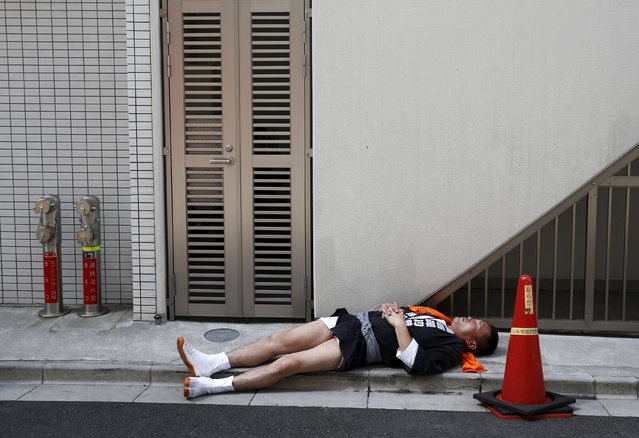
A reveller sleeps on the pavement during the Sanja Matsuri festival in the Asakusa district of Tokyo May 17, 2015. The Sanja Matsuri festival attracts over about one million visitors over its duration of three days, when parties of revellers carry portable shrines through the Asakusa neighbourhood, rocking and shaking them in a belief that this intensified the powers of the deities that reside inside them. (Photo by Thomas Peter/Reuters)
19 May 2015 12:06:00,post received
0 comments

